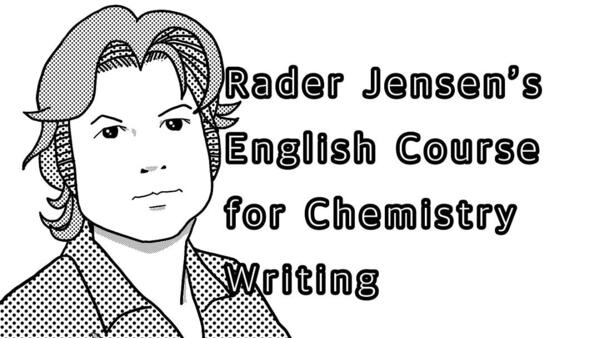CSJ Journals
[化学論文のための英語講座] 第35回:動名詞と不定詞 Part2
(English version is here.)
動名詞と不定詞 Part 2 動名詞
名詞の性質を持つ動名詞は動作(行為)または状態を述べます。例えば研究報告でよく使われる「stirring, cooling, quenching, triturating, investigating」は動作(行為)を述べ、「intriguing, challenging, gratifying」は状態を述べます。動名詞は主語、主語補語、直接目的語、または前置詞の目的語の役割を果たします。例文を見てみましょう。
1. Preparing the intermediate was straightforward.
訳文:その中間体の調製は簡単だった。
解説:「Preparing」は動作(行為)で主語です。
2. We preferred following the reaction by TLC because of the simplicity.
訳文:簡便であるためTLCによる反応追跡を選択した。
解説:「following」は動作(行為)で直接目的語です。
TLC = Thin-Layer Chromatography(薄層クロマトグラフィー)
3. Obtaining crystals sufficient for X-ray analysis proved challenging.
訳文:X線解析に十分な結晶を得るのは困難であることが判明した。
解説:「Obtaining」は動作(行為)で主語、「challenging」は状態で主語補語です。
4. After stirring for 1 hour at ambient temperature, the reaction was quenched with aqueous sodium bicarbonate.
訳文:常温で1時間攪拌した後、反応を炭酸水素ナトリウム水溶液でクエンチした。
解説:「stirring」は動作(行為)で前置詞の目的語です。
次回は「動名詞と不定詞 Part 3」です。
Gerunds and Infinitives Part 2 Gerunds
Gerunds, with the properties of a noun, describe actions or states of being. For example, stirring, cooling, quenching, and investigating, which are frequently used in research reports, show action, while intriguing, challenging, and gratifying show states of being. Gerunds can act as a subject, a subject complement, a direct object, or a prepositional object. Let us look at examples.
1. Preparing the intermediate was straightforward.
Explanation: Preparing is an action and the subject.
2. We preferred following the reaction by TLC because of the simplicity.
Explanation: Following is an action and is a direct object.
TLC = Thin-Layer Chromatography
3. Obtaining crystals sufficient for X-ray analysis proved challenging.
Explanation: Obtaining is an action and the subject, while challenging is a state and subject complement.
4. After stirring for 1 hour at ambient temperature, the reaction was quenched with aqueous sodium bicarbonate.
Explanation: Stirring is an action and the object of a preposition.
At next time, we will discuss the Gerunds and Infinitives 3.
